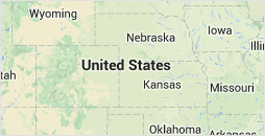Alester Brown
PHONE NUMBER : -----
Map

Does Humidity Impact Pollen Levels?
Humidity levels in your home significantly impact your comfort and well-being. While more moisture in the air can ease congestion and help with respiratory issues, there's a delicate balance between having too much and too little. Those who suffer from common allergies in West Virginia can experience more problems depending on where humidity levels fall. Do you want to know about symptoms and common allergies in West Virginia? Visit this website.
Read on to learn how humidity impacts pollen and other allergens.
High Humidity Above 50 Percent
When humidity levels surpass 50 percent for extended periods, you risk inviting more pollen into your home. If you live in a particularly humid area, you'll notice that plants thrive when moisture levels are high. Plants grow faster. That results in the release of more pollen into the air.
It's not just plants living outside, either. Indoor plants may release pollen if the humidity levels are high.
Other issues you have to worry about with high humidity are mold and dust mites. Mold develops in damp areas, like humid basements and attics. The spores can become airborne or spread through physical contact, clothing, pets, and more. When it does, you and your family could experience regular allergic reactions that make staying indoors unbearable.
Too much moisture in the air also causes dust mites to move in. Their presence alone is enough to trigger allergies, but these tiny bugs also carry waste and other byproducts that cause reactions.
Low Humidity Below 50 Percent
With all the risks of high humidity, you might feel compelled to invest in dehumidifiers that lower levels as much as possible. But that could have just as bad of an effect.
When humidity levels drop, allergens dry up. They become lighter and more brittle, resulting in pieces breaking off and going airborne. Pollen travels through the air easier with less moisture, causing it to spread farther. The same goes for mold spores and the shed exoskeletons of dust mites.
If you struggle with common allergies in West Virginia, or in general, aim for humidity levels of around 50 percent. The 50-percent mark offers a nice balance. While it won't eliminate allergens, it can reduce the release and spread of pollen, dust mites, and mold spores.
Author Resource:-
Alester Brown is a certified immunotherapist. She advises people on personalized home allergy and skin treatment at home. You can find her thoughts at allergy tests blog.
